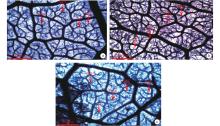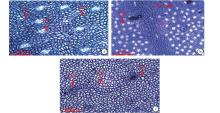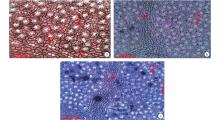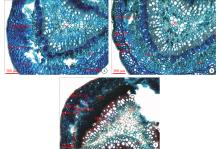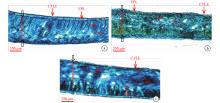Sciences in Cold and Arid Regions ›› 2018, Vol. 10 ›› Issue (4): 279–285.doi: 10.3724/SP.J.1226.2018.00279
• • 下一篇
Comparative foliar anatomy of three Khaya species (Meliaceae) used in Nigeria as antisickling agent
Ololade A. Oyedapo1,*( ),Joseph M. Agbedahunsi1,H. C Illoh2,Akinwumi J. Akinloye2
),Joseph M. Agbedahunsi1,H. C Illoh2,Akinwumi J. Akinloye2
- 1 Drug Research and Production Unit, Faculty of Pharmacy, Obafemi Awolowo University, Ile Ife, Nigeria
2 Department of Botany, Obafemi Awolowo University, Ile Ife, Nigeria
| 1 | Adedeji O Leaf epidermal studies of the species of Emilia cass. (Senecioneae, Asteraceae) in Nigeria . Botanica Lithuanica 2004; 10: 2 121- 133. |
| 2 | Adedeji O, Illoh HC Comparative foliar anatomy of ten species in the genus Hibiscus Linn. in Nigeria . New Botanist 2004; 31: 147- 180. |
| 3 | Arbonnier M. 2004. Trees, Shrubs and Lianas of West African Dry Zones. CIRAD, Margraf Publishers Gmbh, MNHN, Paris, France, pp. 573 |
| 4 |
Akinloye AJ, Borokini TI, Adeniji KA, Akinnubi, FM Comparative anatomical studies of Artocarpus altilis (Parkinson) Fosberg and Artocarpus communis (J. R. & G. Forster) in Nigeria. Sciences in Cold and Arid Regions 2015; 7: 6 709- 721.
doi: 10.3724/SP.J.1226.2015.00709 |
| 5 | Awe SO, Makinde JM Antimalarial effects of the stem bark aqueous extracts of three Khaya species. Fitoterapia 1991; 62: 6 467- 473. |
| 6 | Bilgrami KS, Srivastava LM, Shreemali JL, 1982. Fundamentals of Botany. The 2nd Revised Edition |
| 7 | Carliquist S, 1961. Comparative Plant Anatomy. New York: Holt, Rinehart and Winston |
| 8 | Esau K, 1977. Anatomy of Seed Plants. The 2nd Edition, Wiley |
| 9 |
Fall AB, Vanhaelen-Fastre R, Vanhaelen M, et al. In-vitro Anti-sickling Activity of a re-arranged Limonoid isolated from Khaya senegalensis. Planta Medica 1999; 65: 3 209- 212.
doi: 10.1055/s-1999-14083 |
| 10 |
Illoh HC Foliar epidermis and petiole anatomy of four species of Celosia L. in Nigeria . Feddes Repertorium 1995; 106: 1–5 15- 23.
doi: 10.1002/fedr.19951060107 |
| 11 | Isawumi MA Epidermal studies in the species of Jatropha L. (Euphorbiaceae) found in Nigeria . Nigeria Journal of Botany 1986; 23: 94- 100. |
| 12 |
Levin GA Systematic foliar morphology of Phyllanthoideae (Euphorbiaceae). I. Conspectus. Annals of the Missouri Botanical Garden 1986; 73: 29- 85.
doi: 10.2307/2399139 |
| 13 | Metcalfe CR, Chalk L, 1989. Anatomy of the Dicotyledons. The 2nd Ed.. Oxford: Clarendon Press, 1–46, pp. 298–308 |
| 14 | Odugbemi TO, Akinsulire EA, Aubinu IE, et al. Medicinal plants useful for malaria therapy in Okeigbo, Ondo State, Southwest Nigeria. African Journal of Traditional, Complementary and Alternative Medicine 2007; 4: 2 191- 198. |
| 15 | Olowokudejo JO, Kadem AB, Travih VA An ethnobotanical survey of herbal markets and medicinal plants in Lagos State of Nigeria. Ethnobotanical Leaflets 2008; 12: 851- 865. |
| 16 | Sehgal L, Paliwal GS Studies on the leaf anatomy of Euphobia-VIII. General conclusions and systematic considerations. Phytomorphology 1974; 24: 141- 151. |
| 17 | World Agroforestry Centre, 2004. Khaya senegalensis, In: Agroforestry Database. Oneline at: http://www.worldagroforestry.org/Sites/TreeDBS/AFT/SpeciesInfo.cfm?SpID=1027 (Accessed on: September 14, 2004) |
| No related articles found! |

